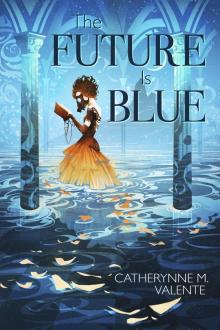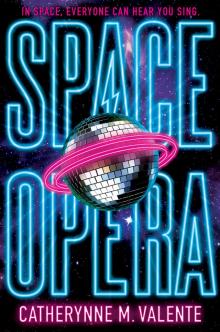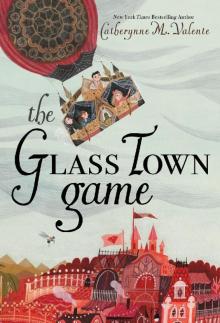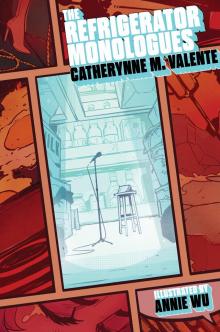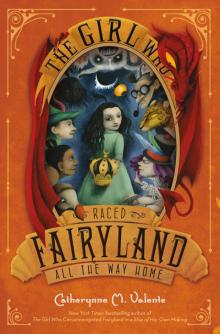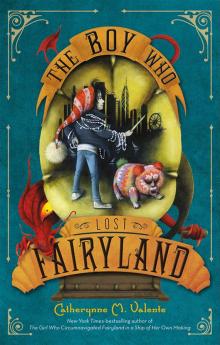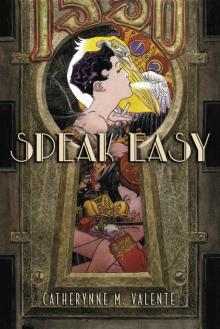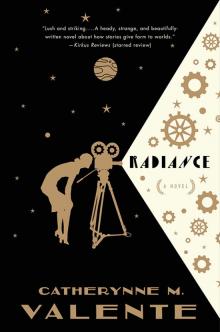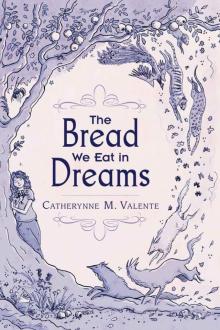


TV Development Guide, Page 5
Stephanie Varella
ecutives, but you call them to inform them about your project
and try to set up a meeting. If you have an IP the network is
interested in, they will probably meet with you even if you
don’t have TV credits.
During your phone conversation, you will have a brief chance to
get them interested/excited about your project. This is sometimes
referred to as the “elevator pitch,” and is very different than the
formal meeting done at the network. On this call, they will make
sure they don’t have something similar in development, the show
has a concept they are interested in developing, and is one they
feel is right for their brand. (See “Know the Audience” in Act 3) If
the network is interested, they will set up a more formal meeting
where the writer pitches the idea more in depth about the idea.
!54
Act 2
Who are the Participants in a Network Pitch Meeting?
•
Writer/creator(s) (which could be a showrunner as well)
•
Showrunner
•
Producer(s)
•
Talent (if attached)
•
Studio executives (if attached)
•
Agent(s) (sometimes, not always)
•
And of course, the network executive(s)
WHAT IS THE GOAL OF YOUR NETWORK PITCH?
1. If you are selling an idea to get a “pilot script order” (and
hopefully more), you are coming in with a concept/idea/IP
that you will pitch in order to get the network to buy the pilot
script or, even better, a series order which would be written by
the writer you have attached to your project.
2. If you are meeting with the network after they’ve read and
liked a spec that you’ve sent them, you are now pitching them
to get a series order. This is a totally different kind of pitch. In
this case, you are selling them on where the series is going (the
long arc of the series, which could include up to five seasons),
what the themes are, what statement you are trying to make,
etc. But, if it’s a limited series it could have any number of
episodes from 6-13. Also, if you have a plan to have that limit-
ed series go on for additional seasons like Fargo. ( See Pitch
Document based on a Spec Script below)
WHAT IS A ‘BIBLE’ FOR A TV SERIES?
As you prepare for your pitch, you should work on the bible for
the show. You wouldn’t necessarily pitch the whole bible, but it’s
good to have most of it thought out. The bible is the extended
plan for the series. Whether it is a comedy or drama, serialized or
a franchise (procedural), it would include:
!55
Act 2
1. Logline
2. Description of the ‘world’/Overview of the series
3. Themes
4. Tone
5. Main character descriptions
For a Procedural/Franchise show:
The bible would include many episode ideas because the network
needs to see that the show can last, at least a hundred episodes!
For a Serialized show:
The bible would include detailed arcs for the main characters and
story in the first season, along with ideas for season two and be-
yond. The network would want to understand and see that you
have a clear vision of the show’s first season. Also, make sure to
add REVEALS along the way and a BIG TWIST in the finale, that
propels the viewer into season two.
WHAT IS A PITCH DOCUMENT?
Now that you know who you are pitching to and what you are
pitching, how do you properly prepare for the pitch?
A Pitch Document is a blueprint for the pitch. The writer/creator
of the show and the producers work together on this document. If
there is a studio involved, initially they would not work on it, but
would get involved after the producers are ready to share it with
them (studio executives).
Writers and producers use this document as a tool for preparing
the pitch before pitching to the networks. If all goes well at the
studio run-through, the producer and/or writer would then per-
fect it with the studio’s input.
!56
Act 2
THE PITCH DOCUMENT BASED ON AN IDEA:
This idea can be original, an IP or from the Public Domain, and
should contain the following elements:
• The opening (or the first thing to consider) is how the writer/
creator, plan to start the pitch. For example, you can open
with the proposed beginning of the pilot (like the teaser, which
is the opening scene), or you can open with a description of
the main character. You can use the set-up, the themes, or the
world of the show.
• Another important element in the opening is a logline, which
is a short description of the show. For example, “This is a sin-
gle-camera, half-hour comedy about…”
• Perhaps the most important consideration in any of the above
scenarios is, “Is it engaging?” “Does it draw people in?”
There are many different ways to start your pitch. Deciding what
works best for you and your idea is crucial.
• Next, the writer can describe the overview, or premise of the
show. This is where the creator can get into more of the details
that are part of the bible (where the series will live, what the
world of the show is, the tone, look, etc.).
• At this point, the writer can go into more detail about the
characters, their descriptions, arcs, turns, reveals, themes, etc.
• Once again, it is most important to be engaging throughout
the pitch. Enrapt your audience in your vision and take them
on a journey. Paint a visual story they can “see” on the TV
screen.
There are some writers who post pitch documents online. You
may be able to access these samples on the internet.
!57
Act 2
If a network has read and liked your spec pilot script, you will not
have to pitch as outlined above.
THE PITCH DOCUMENT BASED ON A SPEC SCRIPT:
Your pitch should be focused on the following:
• Getting into the details included in your bible of the series.
• The network will be very interested in finding out specifically
what happens in episode two and beyond. This would in-
clude all character arcs, storylines, plot twists and turns, etc.
THREE IMPORTANT QUESTIONS TO ANSWER IN
YOUR PITCH
This holds true whether you are trying to sell an idea or after
they’ve read your spec pilot.
1. WHY YOU? Why are you the perfect person for this project?
Talk about what attracted you to this project and how it res-
onates with you.
2. WHY NOW? Why is it perfect timing for this project? Talk
about why it is relevant in the marketplace and at this point in
time. Does it have any relevance to what is happening in the
world now or projected to happen? Does it have social or po-
litical relevance?
3. WHY SHOULD WE CARE? Talk about why we should care
about this project. What is the series sa
ying to its audience?
For either type of pitch, one last thing you may want to discuss is
the network’s brand, their audience and how this show, in particu-
lar, would resonate with them.
!58
Act 2
HOW TO TELL A GOOD PITCH FROM A NOT-SO-GOOD
PITCH
A Good Pitch:
• Is engaging
• Keeps them interested
• Has them asking probing questions
A Not-So-Good Pitch:
• They are checking their watches
• Their eyes are glazed over, yawning
• They are not looking at you
• They are asking questions about things you already discussed
• They said they are not getting it or that they are confused
WHAT HAPPENS AFTER THE PITCH?
If the network buys your project “in the room,” it literally means
they said at the end of the meeting they want it.
CONGRATULATIONS! You’ve done a perfect job!
THE NETWORK ORDERS A PILOT PRESENTATION
This means that the network has ordered a shorter version of the
pilot episode. There are various reasons why a network might do
this. It could be that they really like the idea, but aren’t one hun-
dred percent sure if it would work for them, or it could be they
want to see how it plays with the actors, or financial reasons, etc.
THE NETWORK DOESN’T BUY IT IN THE ROOM
This is by far the more common occurrence, do not despair. Un-
less they say otherwise, you are in the running. Most of the time
they need to discuss it internally before making a decision.
!59
Act 2
It is true that you will probably not sell your show in the room.
However, there are many factors that could affect their decision,
such as fitting in with their brand (the network), what they cur-
rently have in development, how they are doing financially, if they
have a new top executive who wants to change their mandate, etc.
These are just a few of the variables that can affect the acceptance
of your project. Also, take note, you may sell it days, weeks or
even months after the pitch meeting, In other words, don’t give
up on your project!
Words to live by when pitching a show: IT ONLY TAKES ONE
YES!
WHAT ARE THE STANDARD VS. NEWER WAYS OF
PITCHING?
STANDARD WAY (OLD SCHOOL):
• Writers come to the networks and verbally pitch their shows.
This would include a general story for the pilot with examples
of episodes and an overall tone and theme of the series.
NEW WAYS (NEW SCHOOL):
• Today, spec pilot scripts are being submitted directly to the
networks, and sometimes even with one or two more episodes
included in the bible for the series.
• The use of visual aids during a pitch, such as posters, blown-
up pictures, sizzle reels and video presentations, are becoming
more prevalent.
• Tailoring your presentation to fit your targeted network. There
are so many outlets today with very different brands, so net-
works are looking for something that is specifically for them.
!60
Act 2
WHAT IS A SIZZLE REEL?
A sizzle reel is a video presentation for the pitch of your project.
Do you need one? Possibly, but not always. For a reality pitch,
the answer is yes. But, for scripted shows, you will need to decide
if the potential benefits outweigh the potential risks in your par-
ticular case.
POTENTIAL BENEFITS:
• It can evoke the tone of the show, which might be an impor-
tant part of your show and something you want to emphasize.
• It can visually stimulate your meeting, so that the network ex-
ecutives are not just sitting there listening.
• If your idea is hard to convey with a verbal pitch, a sizzle reel
may be your answer.
• Visual aids are also good when a project has many characters
or a lot of details that could get lost due to time constraints.
POTENTIAL RISKS:
• If the network executives don’t like it, it can hurt or ruin your
presentation. This can result from a variety of issues, such as
poor production value, bad acting, not portraying your idea
very well, etc.
• It is a limited way of expressing your idea and may not dis-
play the true way you wish to convey your project.
• When your reel is over, it can mean your chances are over.
You have to try not to shoot yourself in the foot. Remember it
is important to make sure the reel satisfies your reasons for
producing it.
!61
Act 2
HOW DO YOU MAKE A SIZZLE REEL?
If you decide a reel will help your presentation, here are some
ways to put one together.
1. You can produce (pay for) it with your own money.
2. Ask your friends to help you for free or for very little money.
3. You can literally grab video footage from online and edit it to-
gether.
4. You can make a video collage of photos and add text to the
screen to tell your story.
YOU’VE PITCHED YOUR SHOW AND IT DIDN’T SELL.
NOW WHAT?
DO NOT GIVE UP!
Here are a couple of reasons that may explain why you didn’t sell
your show beyond the obvious, like the pitch didn’t go well.
1. Timing is everything. This plays a huge factor. Let’s say you
have a project about a serial killer. Not just any serial killer,
but one we’ve never heard, seen or could have imagined.
Now just as you are about to go out and pitch your idea, a sto-
ry breaks out about a real life killer that is eerily similar. Even
though you can show you were working on this project long
before these crimes were committed, it would never sell be-
cause buyers would think it’s in poor taste to the families of
the victims to do a show so soon. However, if you wait several
years, doing this show would not only be totally possible, but
even probable. Many shows are taken from real life, but tim-
ing is everything. Current events can also affect your show.
For example, you could have a scenario in your show that in-
!62
Act 2
cludes a devastating natural disaster. If that happens in real
life, you, the studio, and the network may decide the timing is
not right to run the show/episode. This does happen and will
continue to happen because art imitates life (and vice versa).
2. The network says they have a project that is similar to yours in
development. This is a tough one because it feels and sounds
like the network can say this and then just go ahead and steal
your idea. In my experience, they don’t. They would have to
participate in a cover-up and hope they aren’t sued. On the
other hand, it is true that people are pitching shows all the
time. It would indeed be rare that your show is so unique that
no one else is pitching, or has pitched something similar.
YOU HAVE PITCHED AND SOLD YOUR IDEA! WHAT’S
THE NEXT STEP?
This is the most important part of th
e scripted TV Development
process.
SCRIPT DEVELOPMENT
If you were thinking it’s all about the pitch, of course the pitch is
crucial otherwise you would not get to this stage of development.
But without a “great script,” there is no TV show. Even if you, the
producer, and all of your friends, think you have a great script,
“great” is a relative term. As discussed earlier, who is to say what
is great? In television, it’s the NETWORK.
If the network thinks it’s great, it is great. It’s your job, whether
you are a writer, producer, development executive, agent or man-
ager, to champion the project until the head of the network be-
lieves it is great. Then your script will become a show.
The development of a script is so important that it is a major factor
in getting your show produced. The quality and focus of your
!63
Act 2
script can prove to be the real beginning, or potential end, of your
project.
WHAT IS A ‘SPEC SCRIPT’?
Spec Scripts are scripts written by writers who did not get paid or
commissioned to write the script.
There are two types of spec scripts:
1. One that is based on an original idea
2. One that is based on an episode of an existing show
WHY DO WRITERS WRITE SPEC SCRIPTS?
Writers write original spec scripts to show a sample of their work.
It is an opportunity for them to express themselves creatively and
it should be unique. It is also a way for producers and executives
of networks and studios to see the writer’s “voice” (which is
unique to every writer) and vision of a proposed new TV show.
Writers write a spec script of an existing TV series to show the ex-
ecutive producers, the creator and showrunner of that show that
they can execute an episode in a superb way. It’s important that it
stands out. So if you are planning to write one, make sure it is a
fantastic episode of that show. It should showcase your talent by
capturing the essence and voice of the show. This is the typical
way for a writer to get a job as a ‘staff writer’ on a show. It’s like a
writer’s version of an actor going on an audition.
WHAT IS ‘COVERAGE’ OF A SCRIPT OR BOOK?
Coverage is a report of the script or book that agents, managers,
producers or executives get from ‘readers’ before, or instead of,
reading the script or book themselves.
!64
Act 2
Readers are paid to read a script or book and send in a report sim-

